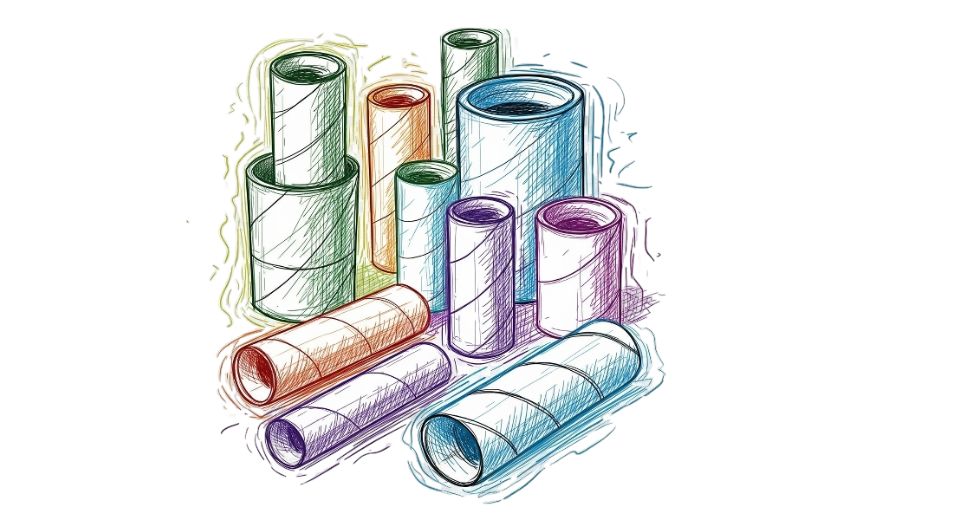
Jul 18, 2025

The report by Metastat Insight sheds new light on the Global Paper Tubes and Cores Market, offering a deep exploration into the underlying forces pushing this current and future trajectory. This report cuts to the underlying presentations of the industry observations to capture the more delicate developments evolving within this particular subsector, industrial packaging. In an environment where materials and sustainability conversations meet more frequently than ever before, paper tubes and cores similarly continue to demonstrate their own relevance in innovative uses throughout a wide variety of industries. Historically viewed as minimalist solutions for packaging and storage solutions, the products have become increasingly central features throughout textiles, construction, shipping, and even luxury consumer goods.
Whereas their applications might be straightforward in appearance, their manufacturing processes, parameters, and performance levels have been dramatically changed. This change reflects broader changes in manufacturing priorities, wherein durability, recyclability, and affordability are considered more meaningfully than before. Businesses that once acquired these items based on availability and price now add more specific performance requirements, from water resistance to weight capacity. What differentiates the current market situation is the evident shift in how paper tubes and cores are being positioned within supply chains. Companies no longer view them as complimentary products but as products that greatly enhance efficiency in operations.
The change in perception owes its origin to the greater scrutiny of supply chains globally. Today's stakeholders have everything on their agenda regarding sustainability effect, lifecycle, and net contribution to waste reduction targets. It is against this broader backdrop that the Global Paper Tubes and Cores Market gains strategic relevance, not only as a market of suppliers but as a marketplace that unites innovation and environmental responsibility. In various regions, local manufacturing complexities render it far from being a monolithic marketplace. From variation in raw material supply to the application of advanced production technologies, distinctive patterns are created that reflect regional economic agendas and regulatory contexts. This fragmentation often generates compelling contrasts: whereas one region will stress strongly on automation and precision engineering, another will stress volume and cost-effectiveness by applying more traditional manufacturing methods.
Despite such differences, shared objectives of meeting customer expectations and ecological regulations unite manufacturers and suppliers globally. Customer expectations have also changed subtly, as in the past end-users in industries such as textiles or paper would have been concerned primarily with specifications that would meet immediate functional needs. Now, a greater aspiration is to see products with certifications, traceability, and aligning into overall corporate social responsibility policies. These evolving demands have a direct impact on product development, from adhesives used to grades of paperboard utilized.
Manufacturers are complying in turn, increasingly directing their strengths towards such high-tech requirements, and expecting future competitiveness to rest as much on demonstrating environmental credentials as meeting physical performance goals. Moreover, the coming together of digital technologies and traditional manufacturing processes cannot be overlooked. Adoption of data-driven quality control with ever more sophisticated logistics platforms offers more transparency and efficiency to the Global Paper Tubes and Cores Market.
These platforms assist manufacturers in delivering bespoke solutions at volume to the particular needs of customers across industries without sacrificing consistency or dependability. As traceability becomes an expectation rather than a special request, such innovations clearly offer competitive advantages. One trend that has been developing is quite fascinating: co-development among manufacturers and end-users during the product development process. Rather than presenting finished products to the market independently, suppliers are more often engaging in discussions with customers to develop solutions to meet very specific application requirements together.
This co-development is more than just customization, such as joint research programs and shared sustainability objectives. These partnerships have incrementally raised paper tubes and cores from utilitarian items to highly engineered components that reflect larger industrial trends. Its prospects in the future seem inextricably bound to global trends toward circular economies and decreased dependence on non-renewable materials. Solutions based on paper literally work themselves into these philosophies, offering biodegradability and recyclability that alternatives like plastics are not capable of matching.
This synergy places the Global Paper Tubes and Cores Market in an advantageous position as businesses and governments increasingly seek items that are both business-satisfying and environmentally friendly. Regional regulation also has a pervasive but powerful effect. With differing jurisdictions imposing progressively greater demands upon packaging and the management of waste, compliance is not merely a matter of the law but of comparative differentiation.
Those firms that can demonstrate preparedness for such regulatory environments will be most likely to attract long-term contracts and agreements. Strategic flexibility and forward thinking become as important as technical expertise in remaining competitive in this market. In general, the data presented through the comprehensive analysis by Metastat Insight provides more insight into the nuance of shifts characterizing the Global Paper Tubes and Cores Market. Instead of a static or purely utilitarian sector, it is an expression of broader industrial, technological, and ecological changes that adapt to the changing expectations laid upon even the humblest components of modern supply chains. The future of the market will most likely be one of continuous innovation, heightened standards for sustainability, and a more central role in the broader discussion of responsible production and use of materials.
Drop us an email at:
Call us on:
+1 214 613 5758
+91 73850 57479